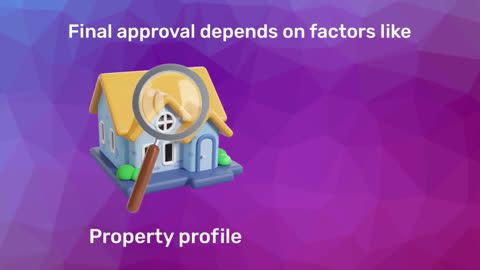Taxes might seem complicated, but they do not have to be. In India, income tax is categorised into five distinct heads of income. These categories help simplify taxation and make it easier to declare earnings. Whether you are a salaried professional, a business owner, or an investor, understanding these categories can help you plan your taxes better and even save money.
Let’s dive into the 5 heads of income tax and see how they affect your financial planning.
Section 14 of the Income Tax Act – Heads of Income
Section 14 of the Income Tax Act, 1961, explains how different sources of income must be grouped for tax purposes. The law divides all types of income into five specific categories. Such a categorisation is done to make tax calculation easier and more structured.
Every person may not earn income from all five categories, but they still need to know which part of their income belongs to which category. This helps in:
Calculating total taxable income correctly
Filing the Income Tax Return (ITR) in the correct format
Avoiding mistakes in reporting and tax payment
Please note that at the end of each financial year, you, as a taxpayer, must organise your income based on these five categories (called "heads of income"). This step must be performed before calculating your income tax liability.
1. Income from salary
If you are working for an employer, your monthly pay check falls under this head. It includes:
- Basic salary
- Allowances (like HRA, transport allowance)
- Perquisites (company car, rent-free accommodation)
- Bonuses
Taxability: Tax is calculated based on the gross salary minus exemptions like House Rent Allowance (HRA) and standard deduction (Rs. 50,000 annually).
Pro tip: You can save more by maximising your deductions. For instance, if you are paying rent and do not receive HRA, you can still claim deductions under Section 80GG. Now, if you have taken a home loan, the interest paid on the loan can help reduce your taxable income under the section for house property (more on that later).
2. Income from house and property
This head includes any earnings you get from the property, whether it is rented out or your second home. Even a self-occupied property can fall under this category, with specific rules for deductions.
Taxability: Income from house property is calculated as: Net Annual Value (NAV) = Gross Annual Value (GAV) - Municipal taxes paid
You can claim deductions under:
- Standard deduction: 30% of NAV
- Interest on home loan: Up to Rs. 2,00,000 annually for self-occupied property
Pro tip: Investing in property not only grows your wealth but also offers tax-saving opportunities. Homebuyers with a home loan can enjoy significant savings by claiming both principal (under Section 80C) and interest deductions.
3. Income from business or profession
Are you a freelancer, consultant, or business owner? This category is for you. Income earned from your trade, profession, or business is covered here.
Taxability: Business owners are taxed on their profits after deducting expenses like rent, salaries, and utilities. Professionals (like doctors or chartered accountants) can also deduct expenses related to their work, such as equipment or office rent.
Pro tip: Keep meticulous records of expenses to maximise your deductions and reduce tax liability. If you run your business from a home office and have a home loan, you might be able to allocate a portion of the interest as a business expense.
4. Income from capital gains
This head applies when you earn profits from selling assets like property, stocks, or mutual funds. Capital gains can be:
- Short-term: Gains from assets held for a short period (like stocks held for less than a year).
- Long-term: Gains from assets held for longer periods.
Taxability: Short-term gains are taxed as per your income tax slab. Long-term gains have a lower tax rate (for example, 10% or 20%, depending on the asset).
Pro tip: Reinvesting in specific assets like residential property can help you claim exemptions under Sections 54 and 54F. If you are reinvesting in property, a Bajaj Finserv Home Loan can make it easier to afford a dream home while saving on taxes. You might already be eligible; check your pre-approved offers now using your mobile phone number and OTP.
5. Income from other sources
Income that does not fall under salary, house property, business or profession, or capital gains is taxed under Income from Other Sources. This head acts as a catch-all category under Section 14 of the Income Tax Act and ensures that no income remains untaxed simply because it does not fit elsewhere.
What type of income is covered here?
If your earnings do not clearly belong to the other four heads, they are reported under this category. Common examples include:
Interest earned from savings accounts, fixed deposits, bonds, or debentures
Dividends received from shares or mutual funds
Winnings from lotteries, game shows, betting, or gambling
Gifts received from non-relatives when the total value exceeds Rs. 50,000 in a financial year
Family pension received after the death of a pensioner
Tax treatment of different incomes under this head
Not all incomes under this category are taxed in the same way. The tax rules depend on the nature of the income.
Interest income
Interest from savings accounts, fixed deposits, and similar instruments is added to your total income and taxed according to your applicable income tax slab.
Individuals can claim a deduction of up to Rs. 10,000 on savings account interest under Section 80TTA.
Senior citizens are eligible for a higher deduction of up to Rs. 50,000 on interest from deposits under Section 80TTB.
Dividend income
Dividends received from Indian companies or mutual funds are included in your total income.
These are taxed as per your income tax slab rate.
Winnings from lotteries, game shows, and betting
Income from lotteries, crossword puzzles, betting, or similar activities is taxed at a flat rate of 30% under Section 115BBJ.
After adding cess, the effective tax rate becomes 31.20%.
Tax is deducted at source (TDS) at 30% under Section 194BA, with no minimum exemption limit.
No deductions or exemptions are allowed against such income.
Gifts received
Gifts from non-relatives become taxable if their total value exceeds Rs. 50,000 in a financial year.
Gifts received from specified relatives such as parents, siblings, spouse, or children are fully exempt from tax, irrespective of the amount.
Important compliance tip
Always report all income earned under this head while filing your return. Non-disclosure can lead to penalties or scrutiny during tax assessments.
115JC of the Income Tax Act
Section 115JC of the Income Tax Act deals with Alternative Minimum Tax (AMT). To promote investment and development in key sectors, the government gave profit-linked deductions. This allowed businesses to reduce their tax if they earned income from “eligible activities”.
However, some taxpayers misused this provision. They:
Claimed unjustified deductions, and
Ended up paying marginal tax (even if they were required to pay regular tax)
To prevent such situations, the government introduced AMT. It is similar to MAT (Minimum Alternate Tax), which applies to companies. AMT, however, applies to other types of taxpayers, such as:
Individuals
Hindu Undivided Families (HUFs)
Association of Persons (AOPs)
Body of Individuals (BOIs)
Non-corporate taxpayers
Who is covered under AMT
Individuals, HUFs, AOPs, and BOIs are covered under AMT only if their adjusted total income is more than Rs. 20 lakh in a financial year. To other non-corporate taxpayers, AMT applies regardless of income level.
When does AMT apply
AMT applies only when the taxpayer claims any of the following deductions:
Deductions |
Explanation |
Section 80H to 80RRB (excluding Section 80P) |
These deductions relate to income from exports, scientific research, royalties, and similar specified activities. |
Section 35AD |
Provides deductions for capital expenditure incurred on certain notified businesses. |
Section 10AA |
Allows deductions on profits earned from units located in Special Economic Zones (SEZs). |
If you are claiming any of these deductions and your income crosses the Rs. 20 lakh limit (if applicable), you must calculate your tax under AMT.
AMT rate
The rate of AMT is 18.5% of Adjusted Total Income. Also, surcharge and cess are added (as per applicable rates) over and above AMT.
Reporting requirement
If AMT applies, the taxpayer must get a report from a Chartered Accountant (CA). The CA certifies that the Adjusted Total Income and AMT have been calculated as per the law. This report must be submitted as part of the tax return.
Heads of Income vs Sources of Income
The terms “Heads of Income” and “Sources of Income” are often used in taxation and may sound similar. However, they refer to entirely different concepts. Let’s understand in detail:
A) Heads of income
Under the Income Tax Act, the government has created five heads of income to group all possible types of income that a person may earn.
These heads are:
Heads of income |
Explanation |
Income from salary |
Money received from employment |
Income from house property |
Rent or income from owned property |
Profits and Gains from Business or Profession (PGBP) |
Income from running a business or profession |
Capital gains |
Profits arising from the sale of assets such as land, property, or shares. |
Income from other sources |
It covers all residual income that doesn’t fit in the above heads (say, interest, lottery, gifts, etc.) |
It covers all residual income that doesn’t fit in the above heads (say, interest, lottery, gifts, etc.)
These heads are used for tax classification. Before filing your ITR, you must categorise all your sources of income under the correct heads.
B) Sources of income
Sources of income mean the actual ways a person or business earns money. These vary widely and are not limited to the five heads. Let’s check how:
For individuals |
For business |
Salary, bank interest rent, freelance income, commissions, or investment returns |
Sale of products, service income, professional fees, government grants, or investment income |
In short, sources explain how you earn money, while heads of income decide how that money is taxed. You must categorise these sources in the five heads of income as mentioned u/s 14 of the Income Tax Act.
Smart tax planning with a home loan
Tax planning is not just about saving money—it is about smart investments. A home loan can reduce your taxable income while helping you achieve the dream of owning a house.
Here is how:
- Principal deduction: Under Section 80C, claim up to ₹1.5 lakh annually.
- Interest deduction: Under Section 24(b), claim up to ₹2 lakh annually.
- Additional benefits: First-time homebuyers can claim an extra deduction of Rs. 1.5 lakh under Section 80EEA.
Considering a home loan from Bajaj Finserv? You might already be eligible for competitive interest rates. Check your pre-approved offers now using your mobile phone number and OTP.
Helpful resources and tips for home loan borrowers |
||
Conclusion
The Income Tax Act, 1961, requires taxpayers to group their different sources of income under five specific heads. These are salary, house property, profits/ gains from business and profession, capital gains, and other sources.
These heads cover all possible types of income an individual or business may earn. By understanding these categories, you, as a taxpayer, can file your ITR correctly and pay the right amount of tax.
Additionally, such categorisation helps the government in proper tax collection. Every taxpayer must follow the rules related to these heads of income. If a person tries to avoid tax by not reporting income under the correct head or trying to hide income, it is considered a violation of the law.
Such actions lead to legal penalties. Therefore, knowledge of these five heads is necessary to meet legal obligations and avoid legal consequences.




